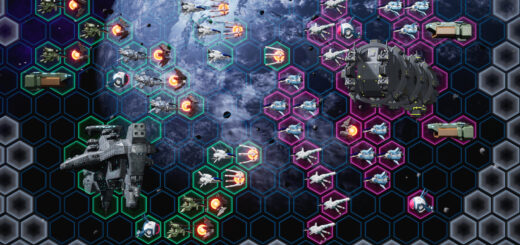Demon’s Souls Remake Review
Meet the New Boss, Same as the Old Boss
It’s fair to say that Demon’s Souls caught nearly everyone by surprise. Its initial Japanese release for PlayStation 3 in 2009 met with a poor reception, so much so that Sony abandoned its initial plans to release the game in the west. However, Atlus took it on and positive word of mouth would ensure that upon its release in America it swiftly became a cult phenomenon, garnering critical acclaim and even several Game of the Year awards, including RPGamer’s very own. Its surprise success would put developer FromSoftware on the fast track to becoming industry leader in the realm of action RPGs; Demon’s Souls’ spiritual successor Dark Souls would catapult it into the mainstream, exploding into an entire subgenre with the company at its head. For 2020, Sony, having certainly acknowledged its earlier mistake, called on Bluepoint Games to remake it as the marquee launch title for the PlayStation 5. But what is Demon’s Souls Remake‘s place after a decade it helped define, and can it hold up on its own even without the original developer’s guiding hand?
For the uninitiated, Demon’s Souls Remake takes place in the kingdom of Boletaria, a land shrouded by an impenetrable fog. The king of the land, Allant, has awakened the Old One by restoring the Soul Arts, unleashing hordes of demons that will slowly envelop the land unless the Old One is put back to sleep. As a warrior from a land outside the fog, players make their way into Boletaria only to have their soul bound and trapped within the Nexus, an otherworldly locale that connects the player to the demon-infested lands. Now looking for a way out of the Nexus, the player must destroy the demons throughout the land in hopes of lulling the Old One back to slumber. This is easier said than done.
It’s difficult to know where to start with the remake of Demon’s Souls. With it launching alongside a brand new console, it will no doubt be receiving many fresh eyes, ones eager to test out the new hardware with a title designed to take full advantage of it. There will be those who have great familiarity with the series but never got around to playing the original, who are likely more prepared for the kind of game it is. Regardless, both of these groups will have to reckon with the fact that not only is this an eleven-year-old game, it’s one that has since been iterated upon and cleaned up in many ways. In 2009, Demon’s Souls was a shock to the system in how it defied expectations for the time, lacking any of the hand-holding or low barriers to entry that had become the presumed mode of game design. To this day, most AAA development seeks to reduce friction with the player as much as possible. Demon’s Souls Remake aims to make friction a core part of its experience and, more often than not, succeeds.
While speaking more to the quality of the original and less the remake itself, perhaps the most impressive part of Demon’s Souls Remake is how well it holds up, if not in scope or polish then at the very least in how unique in its identity it is, even amidst the numerous games it spawned. After creating a character and completing the first stage, the game opens up to let players explore five distinct levels of their choosing. Rather than the generous amount of bonfires present in future Souls games, players are only presented a checkpoint upon defeating a boss. The game’s death system is still in place, meaning that accumulated souls — the game’s currency for leveling and shopping obtained through defeating enemies — are lost upon death. They can be reclaimed, but failure to do so before dying again makes them lost forever. This, combined with the limited checkpoints, reinforces a methodical approach to exploration, rewarding caution and developing the skills to construct mental maps of each level. The bespoke nature of the levels also means that they are still some of the strongest level design in the series, with each feeling decidedly unique and dense with content. Though lacking the interconnected nature of later games, it’s a strong reminder of how the series doesn’t need pseudo-open worlds to work.
Character creation is free-form, giving players ample opportunity to tailor their playstyle. The game has ten classes, but they are little more than starting packages. Once the ability to level up is unlocked, players can distribute them any way they want. Every level equates to a single stat increasing once, so while grinding is possible it is rarely efficient. Instead, stats more appropriately dictate which weapons and items are usable, though certain weapons will get more powerful as specific stats go up. While lacking the variety of later Souls titles, Demon’s Souls Remake does still provide plenty of different ways to go through the game. The incremental leveling also makes it easier to dabble in other options that can make certain edge cases easier to deal with, such as being able to use a bow on certain occasions when a normal melee build will find trouble.
Combat also remains largely unchanged. Some new animations were added to differentiate the weapons further, but on the whole it remains intact. Veterans of the franchise won’t need too much time to get adjusted, but new players will have to learn the ins and outs of the combat system, which requires more experience and familiarity than the game’s meager tutorials provide. Button-mashing will rarely yield results; instead a certain awareness of the environment, enemy behaviors, and the timing of attacks, as well as stamina management are crucial to getting the upper hand in combat. The combat is also where most of the game’s vaunted difficulty rears its ugly head the most. The common line is that Souls games are tough but fair and Demon’s Souls Remake mostly holds to that truth. It balances difficulty on a knife’s edge and it’s easy to dip into frustration only to ultimately triumph and feel a sense of elation and satisfaction. Likewise, it’s not uncommon to make a mistake after hours of smooth sailing and find oneself stuck in a rut. This often comes in the form of the game’s bosses, where even just getting there can be half the battle. Reflecting the original’s primitive stature. the game’s bosses run the gamut between classic Souls difficulty, surprisingly simple fights, and a few outside-the-box boss set pieces. The bosses built around a gimmick tend to be the least refined of the bunch but offer a more experimental bent, changing the game in memorable ways the future games would eschew. The lack of refinement in the boss fights is both a blessing and a curse. They’re often sometimes the more frustrating fights in simply figuring out what to do, but simultaneously helps to further differentiate Demon’s Souls Remake from other games of its ilk.
As tough as it can be, fighting an enemy tends to be straightforward. The most obtuse aspects of Demon’s Souls Remake are its numerous oddities that can be difficult to grasp without the help of a guide. For starters, the player begins the game in Human Form, which grants them their full health bar but makes them more easily detected by enemies because of the noise they make. Dying in Human Form reverts the player to Soul Form, where maximum HP is halved. Regaining Human Form requires either defeating a boss or engaging in the game’s multiplayer by either invading another player’s world or by being invited to another’s. Complicating matters is that entering other people’s worlds requires the player to be in Soul Form, but to be on the receiving end it requires being in Human Form. These concepts are covered in only the barest sense and the ways that they interact with Tendency is even less clear. Tendency is a background modifier for worlds and the character, shifting between black and white based off of certain actions and altering the game by adjusting things like the amount of damage dealt, item find, and even triggering specific events to occur. It’s really cool to see the strangeness of Demon’s Souls kept the same, even in an age where comprehensive wikis about the game will make the game an open book for anyone willing to search for it. But forcing players to meet it on its own terms only helps set it apart further.
With the foundation of the game intact, Bluepoint has put most of its attention toward the game’s audiovisual presentation. In that regard, the overhaul the game has received is nothing short of transformative. Demon’s Souls Remake is drop-dead gorgeous, with environments exuding a level of detail and refinement FromSoftware didn’t have the resources to achieve all those years ago. The game also sounds excellent, especially in the way that the DualSense controller is utilized, from the “whoosh” of a cast spell to the “clink” of a sword bouncing off of a stone wall. The load times are also minimal, reducing the frustration of repeated failures as it becomes quicker to get back into the action and also allowing for switching between levels on the fly, which helps when feeling stuck. As a technical showpiece for the new hardware, Demon’s Souls Remake is only surpassed by Astro’s Playroom, the pack-in game designed to showcase all its new features.
However, with this brand new coat of paint come some reservations regarding some of the redesigns. While created characters no longer look like malformed monsters, some of the NPC and monster designs are steps back from the original, such as the more generic-looking Vanguard Demon that feels very contemporary compared to the original’s admittedly sillier-looking designs. This is actually representative of a dichotomy at the heart of the game that may be its only real failing. The remake’s new sheen and polish on a technical level belies the game’s rough, humbler origins. With so many esoteric systems left as is, it creates a dissociation with the ramshackle way the original was constructed. The original Demon’s Souls had no expectations, this remake has a well-regarded legacy to maintain. This split between the fidelity of the presentation and the oddity of the game’s systems doesn’t ever quite come together. This isn’t even necessarily a negative; it did little to impact enjoyment of the game and new players likely won’t even notice something is amiss. But it does lend the game a mood that is distinct from the original.
Even with that in mind, revisiting Demon’s Souls in this fancy new package was some of the most fun I’ve had all year. The return to Boletaria was a pleasant reminder of just how good the game is, and the influx of new players makes it the current definitive choice for someone looking to get into the series. There’s a certain boldness to releasing the game relatively functionally the same so that a whole new generation of people can experience just how weird it is. While the facelift can cause some dissonance, most will experience a beautiful action RPG with some of the most tightly-designed levels and a bevy of different ways to approach the game. It may not be a brand new game, but even all these years later there still isn’t anything else quite like it.


A stunning new look
Brings back top-quality level design and combat
Maintains the unique features that sets Demon's Souls apart
Can't quite live up to the atmosphere of the original









Recent Comments